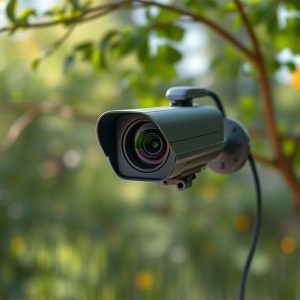Surveillance Device Guide: Protect Your Home, Uncover Hidden Cameras
Surveillance devices like hidden cameras raise legal and ethical concerns, varying by location laws……..
Surveillance devices like hidden cameras raise legal and ethical concerns, varying by location laws. To deploy them responsibly, obtain permissions, use visible indicators, and limit monitoring to necessary areas. In residential settings, conceal spy cameras using everyday objects or blending technology with creativity. Combine physical strategies, like secure locks and privacy films, with digital methods for advanced protection against unwanted surveillance, including regular inspections with specialized equipment. For effective concealment, think like an intruder and update security systems regularly.
“Uncover the ins and outs of residential property surveillance with our comprehensive guide. In an era where privacy is a precious commodity, understanding the legal and ethical implications of surveillance devices is paramount. This article navigates the intricate balance between security and privacy by exploring common spy camera locations, advanced detection techniques, and best practices for fortifying your home against unwanted surveillance. Learn how to conceal spy cameras effectively and stay ahead in the fight for personal space.”
- Understanding the Legal and Ethical Aspects of Surveillance Devices
- Identifying Common Spy Camera Locations in Residential Properties
- Advanced Techniques for Concealing and Detecting Spy Cameras
- Best Practices for Securing Your Home Against Unwanted Surveillance
Understanding the Legal and Ethical Aspects of Surveillance Devices
Surveillance devices, while offering valuable security solutions, come with a host of legal and ethical considerations. It’s crucial to understand that the use of spy cameras—also known as hidden or concealed cameras—is subject to varying laws and regulations depending on your location. In many places, installing such devices without consent may violate privacy rights, leading to serious legal repercussions.
When considering how to conceal spy cameras, it’s essential to prioritize ethical deployment. This includes obtaining proper permissions from all relevant parties, ensuring visible indicators of surveillance (such as warning labels or signs), and limiting the scope of monitoring to specific areas only when necessary. By adhering to these principles, you can balance security needs with respect for privacy, thereby navigating the legal and ethical aspects responsibly.
Identifying Common Spy Camera Locations in Residential Properties
In residential properties, spy cameras often find hiding places that are both discreet and common. Windows, especially those overlooking gardens or neighbors’ homes, are popular spots due to their line-of-sight advantages. Some homeowners also position them in areas leading to entry points like doors or garages, providing early warning of unwelcome visitors. Ceilings, above doors, and behind mirrors are other typical locations, as these areas offer unobtrusive viewpoints without drawing suspicion.
To conceal these devices effectively, consider using common household objects as covers. Mounting cameras behind decorative fans or inside false light fixtures can help them blend in seamlessly. Even simple tricks like placing a camera within a potted plant or securing it under a piece of cloth can make it nearly invisible to the untrained eye. Remember, the key to successful concealment is to choose locations that are both practical and less likely to be noticed by occupants or visitors.
Advanced Techniques for Concealing and Detecting Spy Cameras
Advanced Techniques for Concealing and Detecting Spy Cameras
In today’s digital era, knowing how to conceal spy cameras is essential for maintaining privacy in your residential property. One effective method is to blend technology with creativity. For instance, using smart home devices like WiFi-enabled lights or hidden speakers can serve dual purposes—illuminating a space and potentially capturing footage. Additionally, investing in high-quality, IR (infrared) lights that mimic natural moonlight can help mask the presence of cameras, as they reduce the visible heat signature commonly associated with spy cams.
Detection is just as crucial as concealment. Regularly inspect your property for unusual devices or attachments using a metal detector and thermal imaging camera. Pay close attention to areas like windowsills, doorframes, and light fixtures. Another useful tool is a dedicated UV light, which can reveal hidden cameras by exposing their often-invisible infrared components. By combining these advanced techniques, you can significantly enhance your property’s security and protect your personal life from prying eyes.
Best Practices for Securing Your Home Against Unwanted Surveillance
Securing your home against unwanted surveillance involves a combination of physical measures and digital vigilance. Start by conducting a thorough sweep of your property, identifying potential spots where spy cameras could be hidden. Common areas include door handles, window frames, shadows, and any recesses that offer a view into your home or provide cover for covert recording devices. Use this knowledge to enhance your defenses; install solid, secure door locks, and consider adding privacy films to windows to prevent peepholes or hidden lenses. Regularly inspect outdoor lighting fixtures, ensuring they face away from your property and don’t cast shadows in areas that could conceal cameras.
When it comes to How to Conceal Spy Cameras, think like a potential intruder. Use natural elements like plants or bushes to block line-of-sight access to your home’s exterior. Mount cameras higher up, aiming them at the sky or trees instead of the ground, making it harder for would-be spies to capture footage. Inside your home, be creative with placement; hide cameras within everyday items like fake smoke detectors, clock radios, or even decorative figurines. Regularly update and encrypt all security systems to ensure that even if a device is compromised, unauthorized access to your private footage remains difficult.
Protecting your privacy is paramount in today’s digital age. By understanding the legal and ethical implications of surveillance devices, identifying common hidden camera locations, mastering advanced detection techniques, and implementing robust security practices, you can secure your home from unwanted surveillance. Remember, while awareness is key, respecting privacy rights is crucial. Employing effective strategies to conceal spy cameras becomes a powerful tool in fostering a safer, more private living environment.


